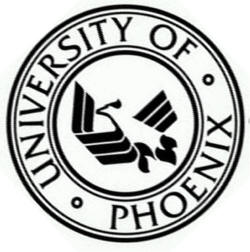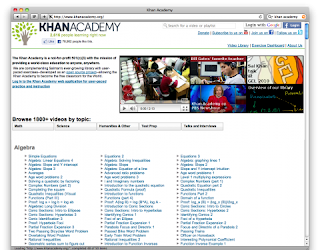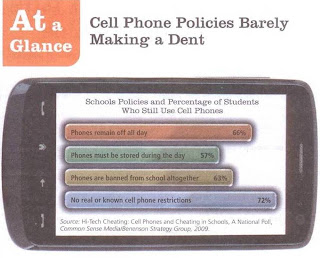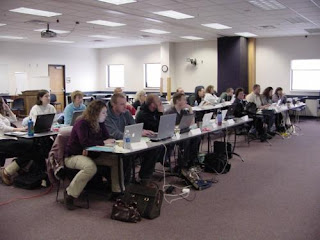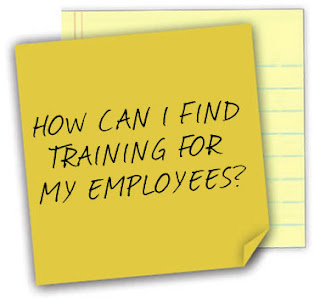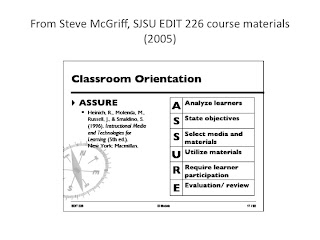From Chapter 28 locate 5 examples of distributed learning. You may pick and choose from the following list.
Corporate distributed learning
Academic distributed learning
Distributed resource support
Hybrid classes
Virtual classes
Distributed learning based at physical locations
Distributed learning via virtual institutions
For-profit distributed learning
Free distributed learning
Skills-based training
Knowledge based learning
Academic distributed learning
The best example I could find would be the University of Phoenix. I remember when they started showing commercial how it was an online college I thought it was a fad. Now online course are standard in most colleges today. I think in the future there will be less brick and mortar colleges and more online colleges due to budget cuts and cost reduction for operating a building.
Corporate distributed learning
When I think of Corporate distributed learning I think of my old job at the North Texas Job Corp. Job Corp is a government program to help student who did not learn in a traditional education setting the job skills they need for the future. I was a teacher and counselor at Job Corp for 6 years. The corporation that ran North Texas Job Corp use computer based software that trained us over the intranet to learn new parts of our jobs. I remember even having to upload notes on student and discipline referral online.
Hybrid classes
Last semester I took a hybrid class in that one week we would meet online the next week we met at the college. The class was a great learning experience because you had the best of both worlds. I could get the personal attention from the instructor that you crave and also you got a chance to talk with your fellow classmates and find out their opinion in real time. The online section was great because you got to save gas and wear and tear on your car. With the comment section you felt more reason to reply to comments because you actually knew the person in the class compared to an online only class.
Virtual classes
Virtual classes have their advantage like the one we are taking with you. For people that live far from a university, it gives them a chance to take classes that may not be available to them because of distance. Virtual classes help people with families who may not be able to attend a traditional class due to babysitting issues. Virtual classes can also help people who have different schedules than what a traditional college plans around. If you work when a course is offer in the past you could not take that course but with virtual classes you have the ability to take the course online.
Free distributed learning
This would be a person or company giving out learning tools such a Khan academy. This website provides free lessons (mostly math) for anyone to learn without having to hire a free tutor. Their mission is to education today youth.
Our small team is on a mission to deliver a world-class education to anyone anywhere, and you can help. Take a second to get the word out, or read about how teachers, translators, donors, and everyone else can contributeChapter 29 discusses the concept of reusability. Think back over the courses you've had over your educational career and identify one with poor reusability characteristics. Explain how the course could be redesigned to improve reusability without changing the underlying content.
I remember taking shorthand with typing in high school. I have never used shorthand since, because of new technology. With the increase use of computers I think teaching shorthand was a waste of my time. I wish the class would have spent more time teaching typing skills. I find it funny when I mention to my students what shorthand was, they say how cool you know how to text Mr. Freeman.
Chapter 30 takes a look at using rich media. Find or create a visual for instruction describing its surface and functional features.
I use from of rich media in my classroom to try to bring history alive. One website that I use is called Prezi.com. With Prezi you can make a regular presentation such as a lesson on the industrial revolution come alive. You can add audio and video and student can control how fast or how slow they want to view the presentation. I also use a video game call buzz quiz TV/World in my classroom. This game lets you write questions that you could upload to the PlayStation Network to play anywhere in the world. So I could write questions about the American Revolution and students who own a PlayStation 3 and the game can play the questions at home. Student without a PS3 can play the game online. It uses video and audio and something students are familiar with the PS3 to help students to learn.
Chapter 31 discusses the future of instructional technologies in the near future from metadata to nanotechnology. Describe how nanotechnology could be used to improve a specific job or task you are familiar with.
I think that nanotechnology could be great. If there was Pad in the future with nanotechnology that student could use for the classroom. I could see student never having to use paper all assignment would be delivered electronically to student who could send it back electronically to the teacher. Student could go online for all assignments and teacher could have instant access to parents though the student pad. Students could have homework help in a flash with their own robotic tutor. Student pad would shut off if stolen or ring loudly if left at home. I feel that this could be the wave of the future.
And finally! Chapter 32 provides two points of view on the direction of the field - the straight and narrow road and the broad and inclusive road. Which point of view do you agree with and why?
I feel that the broad and inclusive road is best. With education technology growing so fast I feel that it is imperative to open up the field to encompass other science such as sociology and anthropology to expend the reach. It will help with innovations in a changing world.
